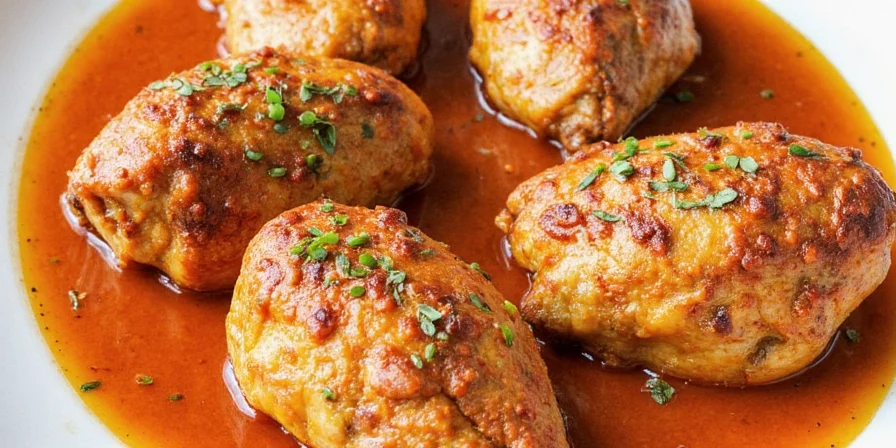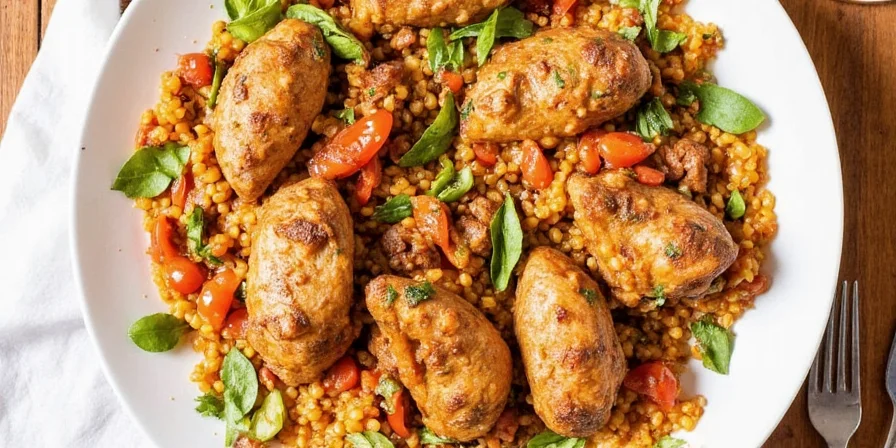5 Moroccan Chicken Spice Secrets That Will Blow Your Mind
If you’ve ever tasted a perfectly seasoned Moroccan chicken tagine and wondered, “How do they make chicken taste like it was kissed by the sun and sprinkled with magic?”, you’re not alone. But here’s the kicker — most of the spices you need are probably already lurking in your pantry, playing hide-and-seek while you stress over what to cook for dinner.
In this post, we’ll walk you through the essential spices for Moroccan chicken, why they matter, how to use them, and even share some pro tips to level up your spice game without breaking a sweat.
Table of Contents
- Why Spices Are the Soul of Moroccan Chicken
- The Holy 5: Core Spices Every Moroccan Chicken Dish Needs
- Spice Combinations & Blends Worth Stealing
- Pro Tips: How to Maximize Flavor Like a Moroccan Chef
- Visual Guide: Spice Flavors Compared
- Common Mistakes (And How to Avoid Them)
- Conclusion: The Spice is Always Right
Why Spices Are the Soul of Moroccan Chicken
Moroccan cuisine isn’t just about bold flavors — it’s a cultural language told through scent, color, and texture. And at the heart of that conversation? Spices.
From ancient trade routes to modern-day kitchens, Morocco has been a spice crossroads for centuries. Each region boasts its own unique blend, influenced by Berber, Arab, and Mediterranean traditions. So when you're cooking Moroccan chicken, you're not just throwing random seasonings into a pot — you're weaving together centuries of flavor history.
The Holy 5: Core Spices Every Moroccan Chicken Dish Needs
While Moroccan recipes can vary wildly depending on the region or family tradition, there are five foundational spices that appear in nearly every dish:
- Cumin – Earthy, warm, and absolutely indispensable.
- Paprika – Adds sweetness and vibrant red color.
- Ginger – Bright, zesty, and slightly peppery.
- Turmeric – For that golden hue and mild bitterness.
- Saffron – Luxurious and floral, used sparingly.
| Spice | Flavor Profile | Traditional Use | Substitution Option |
|---|---|---|---|
| Cumin | Earthy, nutty, warm | Base for most rubs and blends | Fennel seeds (use sparingly) |
| Paprika | Sweet, smoky (if smoked paprika) | Color and depth | Chili powder or tomato paste |
| Ginger | Zesty, peppery, aromatic | Balance richness | Fresh grated ginger |
| Turmeric | Earthy, slightly bitter | Golden color and health benefits | Annatto or saffron threads |
| Saffron | Floral, metallic, luxurious | Special occasions | Turmeric + orange zest |
Spice Combinations & Blends Worth Stealing
One of the best-kept secrets of Moroccan cooking is using pre-mixed spice blends. Think of them as your culinary cheat code — like having a personal flavor stylist for your chicken.
Ras el Hanout
The Beyoncé of spice blends — glamorous, complex, and made from up to 30 different spices! While store-bought versions are great, homemade ras el hanout adds a personal touch.
- Cumin
- Coriander
- Nutmeg
- Allspice
- Cinnamon
- Cayenne

Basic Moroccan Rub (Perfect for Beginners)
- 1 tsp cumin
- ½ tsp paprika
- ½ tsp turmeric
- ¼ tsp cinnamon
- ¼ tsp ginger
- A pinch of cayenne
This mix works wonders when rubbed onto chicken thighs before roasting or grilling.
Pro Tips: How to Maximize Flavor Like a Moroccan Chef
- Bloom your spices: Toast ground spices in oil before adding liquid to unlock deeper flavor.
- Marinate overnight: Letting chicken soak in spices ensures every bite is bursting with flavor.
- Add citrus or vinegar: A splash of lemon juice or cider vinegar brightens up the spice profile.
- Layer flavors: Start with onions, garlic, and ginger as a base before introducing spices.
- Don’t forget the salt!: It enhances all other spices, so don’t skip it unless you want bland chicken.
Visual Guide: Spice Flavors Compared
Still unsure which spices bring what to the table? Here’s a quick flavor comparison chart:
| Spice | Heat Level | Warmth | Complexity | Best Used In |
|---|---|---|---|---|
| Cumin | Low | High | Medium | Rubs, stews, tagines |
| Paprika | Very Low | Low | Low-Medium | Colorful dishes, soups |
| Ginger | Low | Medium | Medium-High | Dressings, marinades, roasted meats |
| Turmeric | None | Low | Low | Golden rice, stews |
| Saffron | None | Medium | High | Special occasion dishes |

Common Mistakes (And How to Avoid Them)
We’ve all been there — excited to recreate that amazing chicken tagine you had in Marrakech, only to end up with something that tastes like dusty cardboard. Here are common pitfalls and how to dodge them:
- Using old spices: Ground spices lose potency after 6–12 months. Smell test them — if they don’t smell like anything, toss ’em out.
- Not balancing flavors: Too much of one spice can overpower others. Stick to ratios or adjust gradually.
- Over-marinating with acidic ingredients: Lemon or vinegar left too long can break down meat texture. Marinate no more than 24 hours.
- Skipping fresh aromatics: Garlic, onion, and herbs like cilantro or parsley elevate the spice blend from good to legendary.
Conclusion: The Spice is Always Right
Mastering spices for Moroccan chicken doesn’t require a degree in flavor science or a trip to Fez — just a bit of curiosity and a willingness to play with your pantry. Whether you’re roasting, grilling, or slow-cooking, these spices have got your back.
Remember, the key to authentic Moroccan flavor lies in balance, layering, and respecting the individual character of each spice. So next time you're staring at a boring piece of chicken, reach for those spices and let them do the talking. After all, flavor is universal — and Morocco’s calling your name.
Now go forth and season like a boss.











 浙公网安备
33010002000092号
浙公网安备
33010002000092号 浙B2-20120091-4
浙B2-20120091-4